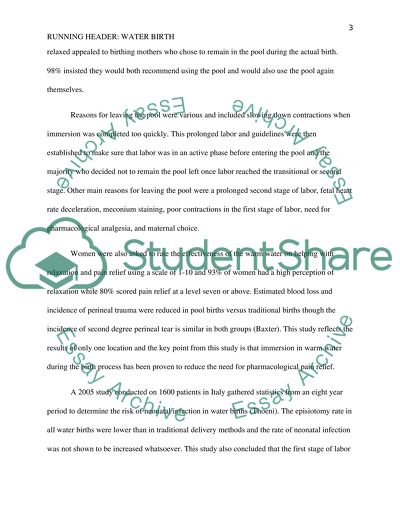Cite this document
(“Water birth Research Paper Example | Topics and Well Written Essays - 1250 words”, n.d.)
Water birth Research Paper Example | Topics and Well Written Essays - 1250 words. Retrieved from https://studentshare.org/nursing/1592758-water-birth
Water birth Research Paper Example | Topics and Well Written Essays - 1250 words. Retrieved from https://studentshare.org/nursing/1592758-water-birth
(Water Birth Research Paper Example | Topics and Well Written Essays - 1250 Words)
Water Birth Research Paper Example | Topics and Well Written Essays - 1250 Words. https://studentshare.org/nursing/1592758-water-birth.
Water Birth Research Paper Example | Topics and Well Written Essays - 1250 Words. https://studentshare.org/nursing/1592758-water-birth.
“Water Birth Research Paper Example | Topics and Well Written Essays - 1250 Words”, n.d. https://studentshare.org/nursing/1592758-water-birth.


